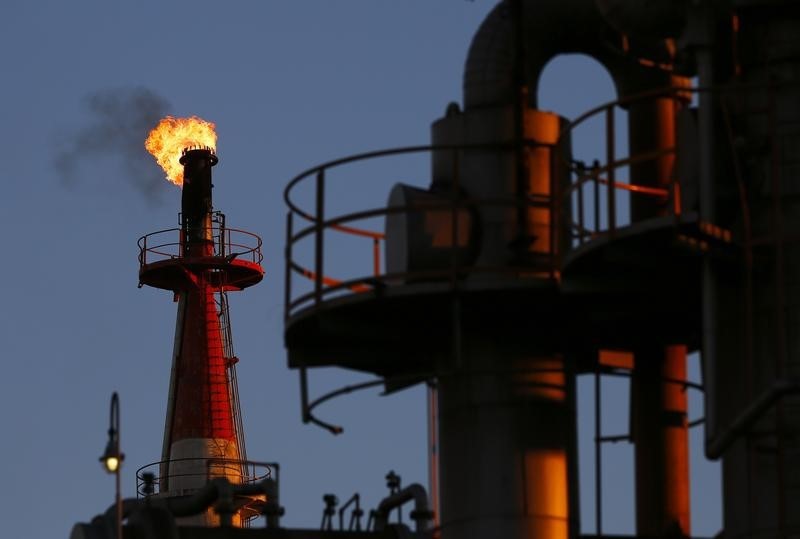By Erwin Seba
HOUSTON (Reuters) -Oil prices dipped on Friday, a day after topping $85 a barrel for the first time since November, but prices were expected to finish more than 3% higher for the week on rising demand from U.S. refiners completing planned overhauls.
futures slid 9 cents or 0.11% to $85.33 a barrel at 12:16 p.m. CDT (1716 GMT). U.S. West Texas Intermediate (WTI) crude was down 17 cents or 0.21% to $81.09.
“Supplies are tightening” for motor fuels, said Phil Flynn, analyst at Price Futures Group. “Prices are at risk to go higher.”
But “there are worries the U.S. Federal Reserve won’t be able to cut interest rates” because inflation remains above the central bank’s target of 2%, Flynn added.
Cuts in interest rates are seen as opportunity for demand growth in the United States.
Prices had been range-bound for much of the last month roughly between $80 to $84 a barrel. Then the International Energy Agency on Thursday raised its view on 2024 oil demand for a fourth time since November as Houthi attacks have disrupted Red Sea shipping.
World oil demand will rise by 1.3 million bpd in 2024, the IEA said in its latest report, up 110,000 bpd from last month. It forecast a slight supply deficit this year should OPEC+ members sustain their output cuts having previously forecast a surplus.
U.S. energy firms this week added the biggest number of oil and rigs in a week since September, with the oil rig count also rising to its highest in six months, energy services firm Baker Hughes said in its closely followed report on Friday.
The oil and gas rig count, an early indicator of future output, rose by seven to 629 in the week to March 15. Baker Hughes said oil rigs rose six to 510 this week, their highest since September, while gas rigs rose one to 116.
The gains this week have come despite the U.S. dollar strengthening at its fastest pace in eight weeks. A stronger dollar makes crude more expensive for users of other currencies.
Also supporting prices were Ukrainian strikes on Russian oil refineries, which caused a fire at Rosneft’s biggest refinery in one of the most serious attacks against Russia’s energy sector in recent months.
“We’re continuing to tread water,” said John Kilduff, partner with Again Capital LLC said of Friday’s activity.
oil stockpiles also fell unexpectedly last week as refineries ramped up processing while gasoline inventories slumped as demand rose, the Energy Information Administration said on Wednesday.
Lower interest rates cut consumer borrowing costs, which can boost economic growth and demand for oil.
In the U.S., some signs of slowing economic activity were seen as unlikely to spur the Federal Reserve to start cutting interest rates before June as other data on Thursday showed a larger-than-expected increase in producer prices last month.
Read the full article here




